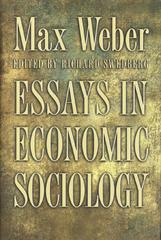NextEra Energy has been helped in its expansion by the fact that prices of renewable energy equipment, such as wind turbines and silicon solar modules that are used in generating electricity from solar power, have been falling since 2010. a. Draw a graph showing the market for coal used in generating electric power as it was in 2010, before the sharp declines in the prices of renewable energy equipment. Be sure to include on your graph the effects of the externality from burning coal, the economically efficient level quantity of coal, and the market quantity of coal. P2 Because burning coal generates a negative externality in the form of air pollution, the Price of c accompanying graph shows P O A. the marginal social cost of producing coal, S2, is greater than the marginal private cost that utilities pay, S, . As a result, the efficient equilibrium quantity of coal, Q1, is larger than the market equilibrium quantity, Q2. D1. O B. the marginal social cost of producing coal, S,, is less than the marginal private cost that utilities pay, S2. As a result, the efficient equilibrium quantity Q2 Q of coal, Q2, is less than the market equilibrium quantity, Q1 . Quantity of coal O C. the marginal social cost of producing coal, $1, is less than the marginal private cost that utilities pay, $2. As a result, the efficient equilibrium quantity of coal, Q1, is larger than the market equilibrium quantity, Q2. $2 S1 O D. the marginal social cost of producing coal, $2, is greater than the marginal private cost that utilities pay, S1 . As a result, the efficient equilibrium quantity of coal, Q2, is less than the market equilibrium quantity, Q1 . P2 b. On your graph from part (a), show the effects on the market for coal of the falling prices of renewable energy equipment. Does the effect make the market quantity of Price of coal P coal closer to or further away from the economically efficient quantity of coal? Briefly explain. As shown in the graph, the falling prices of renewable energy equipment will O A. decrease the demand for coal, shifting the demand curve to the left from D1 D1 to D2 and causing the equilibrium quantity of coal to fall from Q, to Q4 Q2 Q3 Q1 D2 which is less than the efficient quantity, Q2 Quantity of coal B. increase the quantity of renewable energy equipment demanded, but have no effect on either the demand for coal or the equilibrium market quantity of coal, which remains at @1 C. decrease the demand for coal, shifting the demand curve to the left from D to D2 and causing the equilibrium quantity of coal to fall from Q, to Q3, which is closer to the efficient quantity, Q2. D. decrease the demand for coal, shifting the demand curve to the left from D, to D2 and causing the equilibrium quantity of coal to fall from Q, to Q4, which is less than the efficient quantity, Q3







